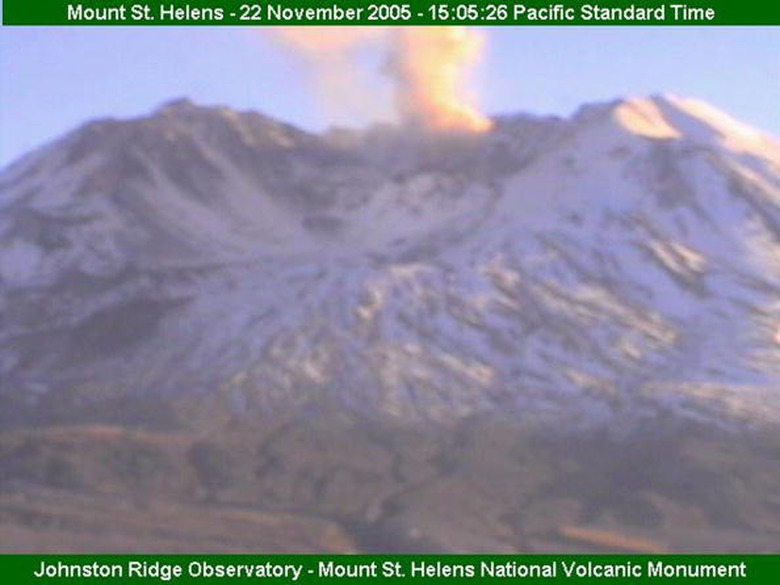The Difference Between The Three Types Of Volcanoes
Volcanologists utilize many different systems for classifying the world's volcanoes. However, there are three primary types that are common to all systems: cinder cone volcanoes, composite volcanoes and shield volcanoes. While these volcanoes share some common characteristics, there are many important differences among them. These distinctions include their structure, size, lava and eruptive nature.
Structural Differences
Structural Differences
Cinder cone volcanoes have steep, straight sides, between 30 and 40 degrees, and a single, large summit crater. They are constructed primarily of tephra, which is fragmented pyroclastic material. Composite volcanoes have an upwardly concaved slope and a small summit crater. They are constructed of alternating layers of hardened lava and pyroclastic flows. Shield volcanoes have an upwardly convex slope, averaging less than 15 degrees and flatter on top. They are comprised almost entirely of lava flows from a central vent, cluster of vents or rift zones along their flanks.
Size Differences
Size Differences
Cinder cone volcanoes are relatively small, rarely exceeding 1,000 feet tall. Composite volcanoes, also known as stratovolcanoes, are towering structures, often rising more than 10,000 feet. Shield volcanoes are broad, typically 20 times wider than they are high. These volcanoes can be massive. For example, Mauna Loa and Mauna Kea are the tallest volcanoes on the planet, rising more than 31,000 feet from the ocean floor.
Lava Differences
Lava Differences
Composite volcanoes typically feature andesitic, dacitic and rhyolitic lava. This lava is relatively cool and thick, enabling it to trap large amounts of gas. Composite volcanoes have a low magma supply rate, resulting in infrequent eruptions. Shield volcanoes feature basaltic lava. This type of lava is hot, fluid and low in gas content. Shield volcanoes are characterized by a high magma supply rate, lending itself to frequent eruptions. Cinder cone volcanoes feature lava with hybrid characteristics. This lava is basaltic, but it is also charged with gas. Cinder cone volcanoes are generally characterized by limited magma supplies, with some volcanoes erupting only once during their life cycle.
Eruption Differences
Eruption Differences
Cinder cone volcanoes are characterized by eruptions of lava fountains. However, the gas within it causes it to explode into smaller blobs and bombs that fall around the vent. These eruptions are known as Strombolian eruptions. Lava flows can also occur from the base, covering large areas. Composite volcanoes are characterized by highly explosive eruptions. Their thick, gas-rich lava can allow pressure to build to high levels. These Plinian eruptions are characterized by large eruptive columns, pyroclastic flows and lahars. Shield volcanoes are characterized by non-explosive lava flows that can travel long distances over the volcano's gently sloping sides.
Cite This Article
MLA
Bennett, Doug. "The Difference Between The Three Types Of Volcanoes" sciencing.com, https://www.sciencing.com/difference-between-three-types-volcanoes-8558582/. 24 April 2017.
APA
Bennett, Doug. (2017, April 24). The Difference Between The Three Types Of Volcanoes. sciencing.com. Retrieved from https://www.sciencing.com/difference-between-three-types-volcanoes-8558582/
Chicago
Bennett, Doug. The Difference Between The Three Types Of Volcanoes last modified March 24, 2022. https://www.sciencing.com/difference-between-three-types-volcanoes-8558582/
